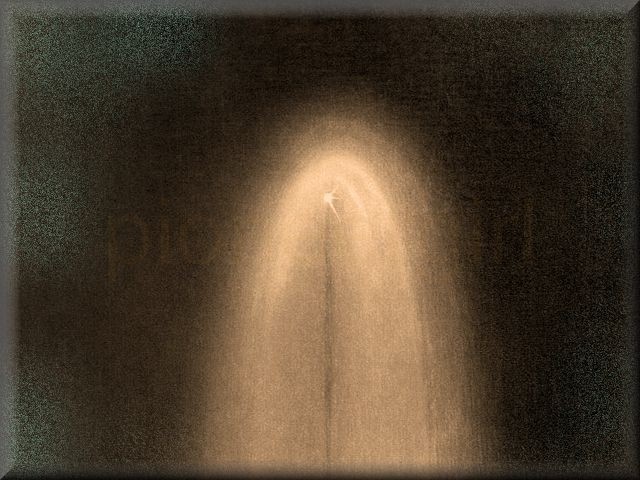Have you seen the comet?

Comet. One of the members of the solar system which usually move in very eccentric orbits, approaching very near to the sun in their perihelion, and receding to a very great distance from it at their aphelion. A comet commonly consists of three parts; the nucleus, the envelope, or coma, and the tail; but one or more of these parts is frequently wanting. — Webster, 1882
 A comet, plainly visible in the northwestern heavens, was noticed last evening by many of our citizens for the first time. It will appear about 9 o’clock tomorrow (Friday) evening. – Brookings County (Dakota Territory) Press, June 1881
A comet, plainly visible in the northwestern heavens, was noticed last evening by many of our citizens for the first time. It will appear about 9 o’clock tomorrow (Friday) evening. – Brookings County (Dakota Territory) Press, June 1881
 In Pioneer Girl, Laura Ingalls Wilder wrote that during the summer of 1881, after the Hard Winter, two things happened at about the same time: (1) she worked for Mrs. White in De Smet (see Chapters 1-7 in Little Town on the Prairie), and (2) a comet appeared in the sky. There’s a bit more to the story, but you can read about it for yourself in Pioneer Girl.
In Pioneer Girl, Laura Ingalls Wilder wrote that during the summer of 1881, after the Hard Winter, two things happened at about the same time: (1) she worked for Mrs. White in De Smet (see Chapters 1-7 in Little Town on the Prairie), and (2) a comet appeared in the sky. There’s a bit more to the story, but you can read about it for yourself in Pioneer Girl.
I used to think the comet Laura wrote about was Encke’s Comet, but there were multiple comets that were visible in Dakota in the early 1880s. Encke’s Comet was one of them, also visible in January 1884. It has an orbital period of 3.3 years.
Another comet from the Little House years was the Great September Comet, visible from September 1882 until February 1883 in De Smet. It got brighter and brighter, and in October (when it really made the news in Dakota Territory newspapers), there were a dozen or more satellite comets also visible, and the main comet had a 30 degree tail. It’s possible that Laura was confused about exactly when she saw a comet, since she only mentions seeing one comet in her memoir, and the Great September Comet would be a good candidate for a most memorable one.
But what about a summer-of-1881 comet, visible to the naked eye in southeastern Dakota Territory? That means C/1881 k1 or The Great Comet of 1881, also called Trebutt’s Comet of 1881 (so as not to confuse it with his comet of twenty years prior), and called the “Forgotten Great Comet of the Nineteenth Century” in a 1999 piece by Wayne Orchiston. You can read his excellent article HERE.
The “naked eye” Great Comet of 1881 was discovered by Australian astronomer John Tebbutt at Windsor, New South Wales. Tebbutt made observations and measurements on thirteen dates. The comet got brighter and moved rapidly northwards, and it remained visible for about fifteen weeks, first appearing in the northern hemisphere on June 22, 1881. It was visible each clear day for a short time just before sunrise and again for a short while in the evening, in a spot just above the horizon. The head of the comet shone like a star while the tail glowed like a streamer of the Northern Lights; it was said to have been a most impressive sight. The comet was drawn and photographed many times during the summer of 1881, and a number of those images are readily available today.
The image shown at right is the 1881 Etienne Trouvalet chromolithograph of the Great Comet of 1881 from observations made on June 25 and 26. It was first published in The Trouvelot Astronomical Drawings of 1881.

comet (PG)

